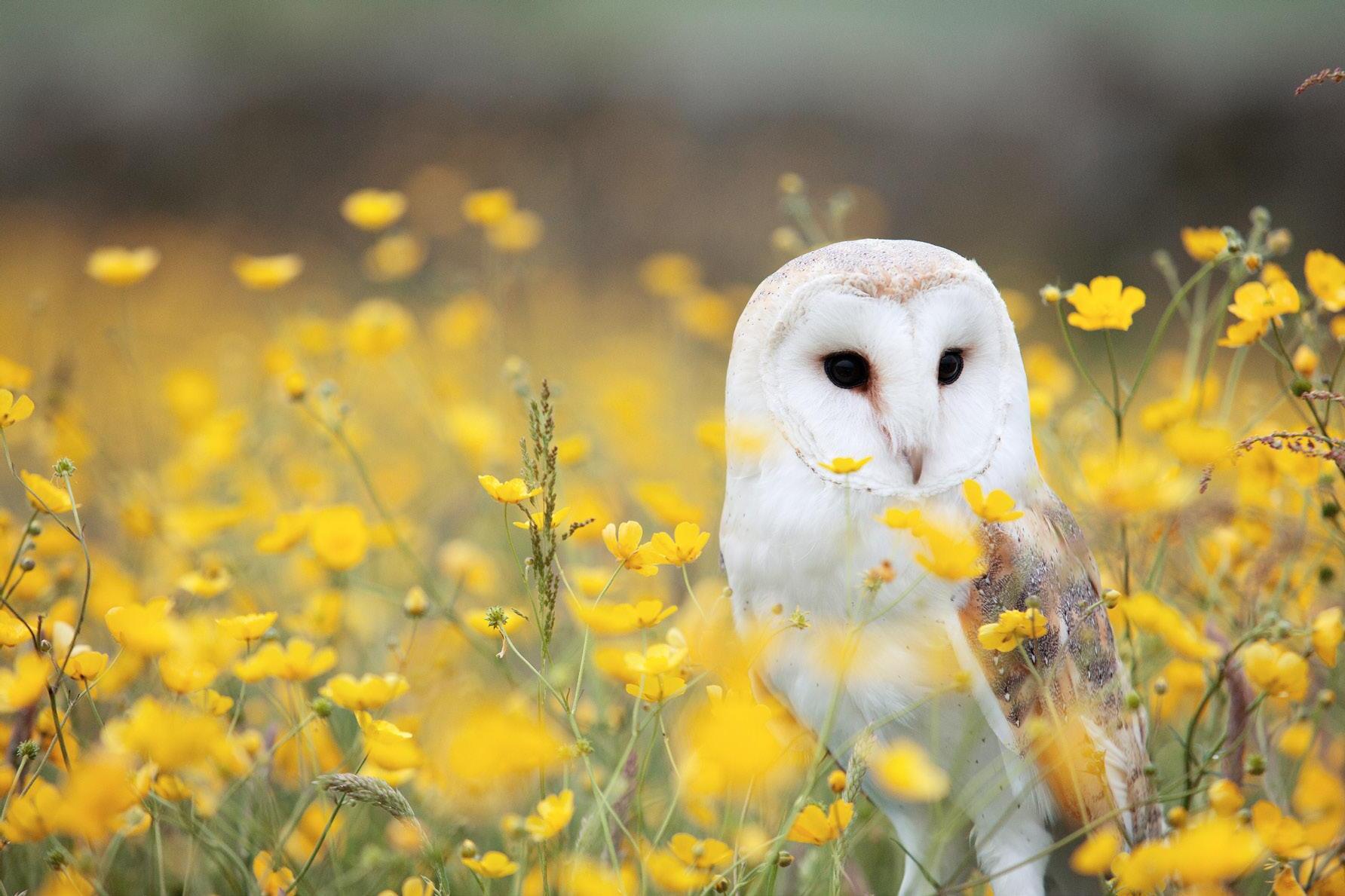

Simple Steps to Enhancing Biodiversity on Farm
An Integrated Farm Management Guidebook.
Who
are
LEAF (Linking Environment And
Farming)?
We are a charity that promotes and supports more sustainable farming to create a resilient food and farming system for future generations.

This guidebook is kindly supported by Waitrose & Partners, as part of the Farming For Nature programme.
We connect.
We connect farmers, innovators and industry to understand best practice sustainable farm management and how it can be applied most effectively to each farm’s unique situation.
We build trust.
We provide assurance that growers are farming more sustainably through our independently audited LEAF Marque certification; from the health of their soils to how they engage with local communities.
We educate.
Our team of qualified educational specialists work with schools, citizens and farmers across the UK to bring sustainable farming to life, both in schools and on-farm.

Introduction.
Biodiversity is recognised as an important part of sustainable agriculture. It is like any other product of the farm; what is achieved depends on the starting conditions, the capability of the land and the work put in. Farmers have always considered themselves stewards of the land and now they are increasingly being asked and required to do more to help minimise the effects of farming on the environment and contribute to tackling climate change.
Simple Steps to Enhancing Biodiversity on Farm shows that through the adoption of Integrated Farm Management (IFM) farmers can deliver vibrant and resilient biodiversity which complements and enhances sustainable food production. It is a straightforward and practical guide which will inspire farmers and land managers to optimise their biodiversity, both for the sake of their own farm resilience and to combat global climate change.
Biodiversity isn’t just about the plants and animals above the soil, biodiversity below the soil plays a crucial role in maintaining healthy soil and promoting nutrient cycling. This leads to enhanced soil fertility, helping crops to access essential nutrients. For example, min-till can encourage earthworm populations which contribute to good soil drainage and therefore crop growth. Furthermore, biodiversity on a farm provides natural pest control. Predatory insects and animals help keep pest populations in check, reducing the need for chemical pesticides. Diversification of rotations and management practices can also disrupt pest life cycles, minimising crop damage and disease spread.
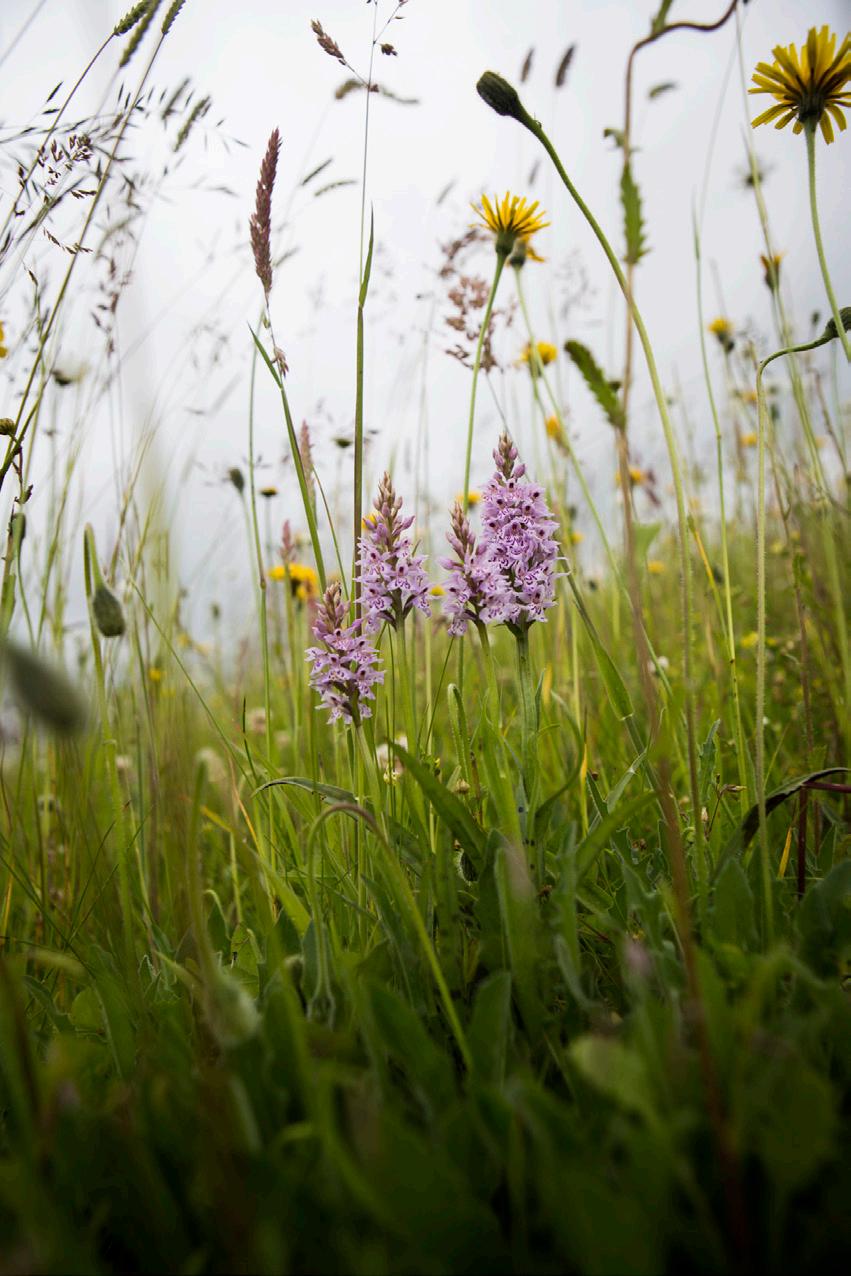

Wild insects pollinate our food for free and improve many crop yields. It is estimated that 84% of EU crops (valued at £12.6 billion) and some 80% of wildflowers rely on insect pollination. Oilseed were increased on average by up to 37.5% when bee diversity increased tenfold. This makes pollination a vital service upon which Trees and hedges provide vital wildlife habitats across the farm, whilst providing shelter for livestock from wind, rain and snow and shade from the summer sun, thus reducing chilling and heat stress, with consequent increases in growth rates and milk yield. Hedgerows act as a barrier to soil movement, preventing it being washed away during periods of high rainfall and being blown
Increased biodiversity provides improved resilience to climate change and extreme weather events. Flooding is increasingly a concern to everyone, including farmers. Biodiverse wetlands, created in areas of low productivity on the farm can help reduce localised flooding and adding buffer strips protects water from pollutants whilst creating habitat for a range of species from
LEAF has been developing and promoting IFM for over thirty years with its network of inspirational demonstration farms and world-renowned innovation centres, through its environmental assurance scheme LEAF Marque, and associated
What does biodiversity do for you?
Biodiversity and natural habitats provide the following essential ecosystem services to agriculture and the rural community.
Erosion Prevention
Pest Control
Structure & Function Wind Break Erosion Prevention
Pest
Control
Figure 2: The multiple services provided to agriculture by biodiversity (ELN-FAB, 2014)
Integrated Farm Management (IFM).
Integrated Farm Management (IFM) is a holistic, farm businessspecific approach to farm management that aims to enhance sustainability across economic, environmental, and social elements of your business. It provides a structured framework for assessing and improving farm management practices.
‘Business-specific’ means that every business will approach IFM in a unique way. This will depend on many factors, including the products you produce, where you are in the world, the resources you have available and your own specific business goals.
IFM is made up of nine interrelated sections, which together help farmers implement more resilient and sustainable farming practices and outcomes. An understanding of the importance of each section and how they connect is essential for effective implementation of IFM.
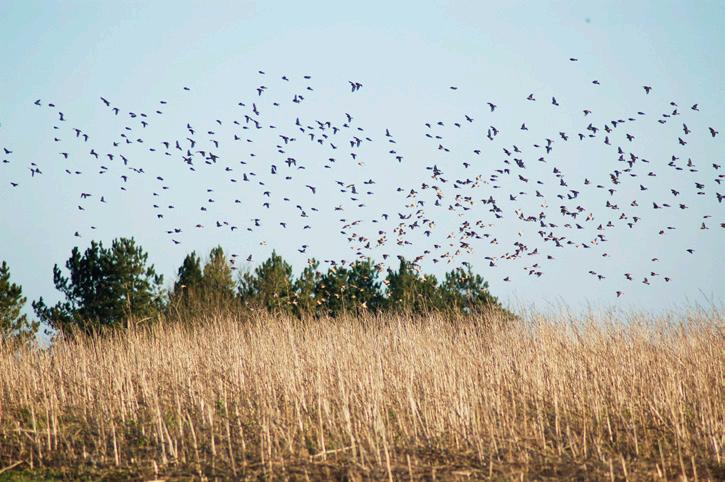




DRIVINGCIRCULAR AGRICULTURE Integrated Farm Management CLIMATE+ NATURE +



































DRIVINGCIRCULAR AGRICULTURE ECONOMY+ SOCIETY +
Benefits of IFM.
Implementing IFM can lead to enhanced business outcomes, for example cost savings on energy, reduced inputs, improved resilience and adaptability in extreme climate conditions and improved relationships with your local community and fellow business owners. By supporting the continuous improvement of practices across the farm, IFM enables farmers to adapt to evolving climate change challenges whilst optimising productivity.
Monitoring. Step 1: Identify habitats.
The first step of successful biodiversity and habitat management is identifying and understanding the current habitats on your farm and the species present.
Consider creating a habitat map to include:
▷ Areas and sites on the farm with statutory protection or designation
▷ Areas and sites on the farm where important species or populations are present.
▷ Lakes, ponds and watercourses.
▷ Natural and semi-natural habitats. Habitat type can include waterbodies, margins, woodland and forest, scrub and shrubland, wildflower meadows, grazed areas, desert, savanna, hedges, ditches and dikes, habitats within cropped areas (i.e. habitat banks and groups of trees).
▷ Linear features (e.g. hedges, ditches, field margins).
▷ Point features (e.g. in field trees, ponds, water features).
▷ Public rights of way
▷ Archaeological or historical sites.
Building on continuous improvement as part of an IFM approach, the map should be regularly reviewed, updated and shared with all staff.
Mapping habitats can also help you to assess whether greater connectivity between habitats could be beneficial for creating natural corridors and ‘stepping stones’ for farmland species. This will enable you to distinguish the extent of one habitat type over another and provide further guidance on accessing nature-related income for your farm business.
Furthermore, you may wish to connect with a local biodiversity advisor, who can support you with how to monitor and manage your habitat most appropriately, the types of habitat that would best support your local farmland species and ways that they can provide year-round food and shelter. Biodiversity advisors will also have tips on how you can monitor species numbers, diversity, and activity.
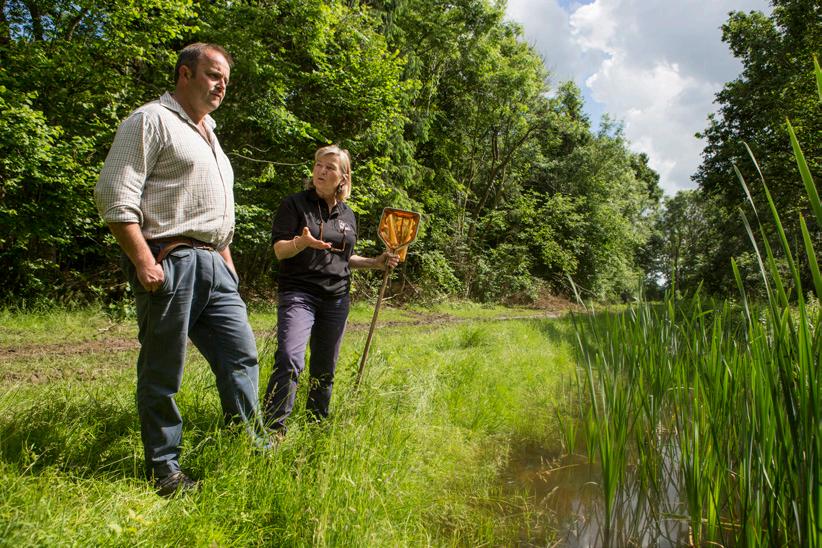
Step 2: Identify & monitor key species.
Once your habitats are mapped, it is easier to monitor and keep track of the species present on farm.
Through monitoring habitats on farm, you will be able to form a list of all the species seen, heard or identified through animal tracks and trails. Start by monitoring at least two key species appropriate to your farm and location, and one habitat type. Species monitoring can measure the impact of different practices and habitats and allow you to understand how you might increase numbers or create natural habitat corridors across your farming business, enabling species to move safely.
Understanding the geographical range of a particular species can also be helpful, in terms of providing appropriate habitat, shelter and food. Where you have protected or priority species on your land, identify whether there are any particular threats or challenges. Invasive species should be monitored also.
Monitoring in practice.
Farm walks are one of the easiest and effective ways of monitoring species on-farm. And everyone can get involved! Head out with a checklist and carry out a baseline survey of the biodiversity seen. A range of mapping software is available, as well as apps and guides for identifying different species of animals and plants.
Some species, including bats and birds, may require specific licenses or permits for monitoring. It’s essential to comply with local regulations and seek guidance from wildlife experts if necessary.
Different species require different techniques for monitoring, for example:
▷ Birds: Birdwatching, nest surveys, and recording bird song.
▷ Mammals: Camera traps, footprint tracking, drone and thermal imaging and direct observation.
▷ Insects: Insect traps, plant surveys for damage, and visual counts.
▷ Amphibians: Pond surveys, listening for calls, and direct observation.
▷ Reptiles: Reptile surveys, habitat assessments, and direct observation.
▷ Plants: Plant surveys, quadrat sampling, and species identification.
▷ Soil biology: Earthworm counts, soil sound monitoring.
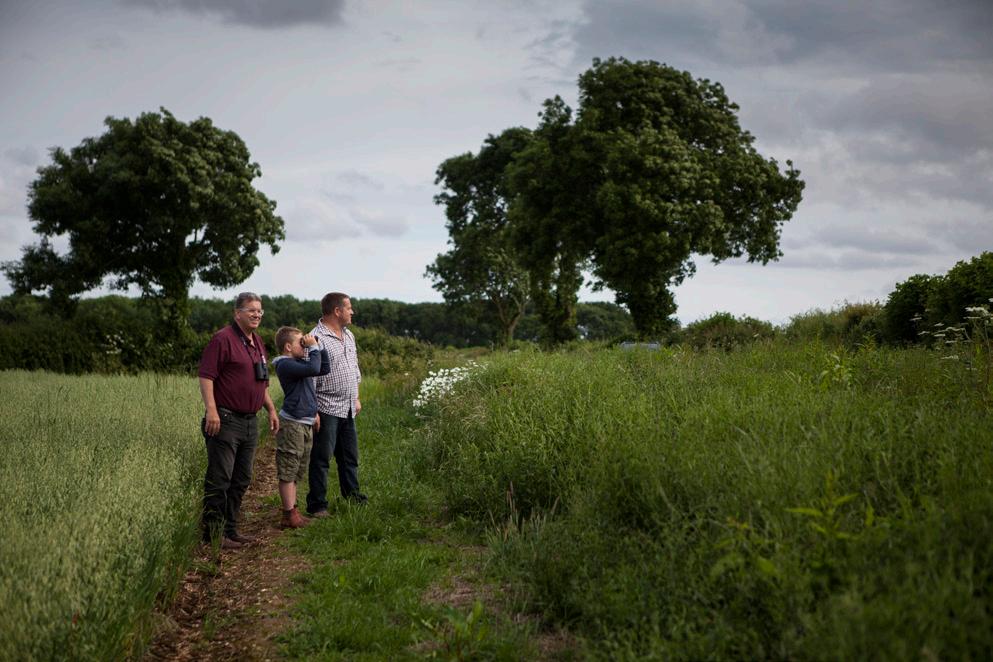
Ensure that you record your data effectively, either on paper or digitally. Also record the location where you carry out your recording, so that you can return to the same place in subsequent years.
Identifying species requires both knowledge and practice. Seek advice in the identification of species if required (for more information, see Step 6). Further your knowledge through activities such as training and local farm visits and walks. Take photos, involve farm staff and local interest or biodiversity groups in the monitoring of key indicator species. Alternatively, you could talk to local bird groups to see if any volunteers would be willing to come and monitor birds on your land. Similar interest groups are available for other types of wildlife.
Management. Step 3: Manage farmland sympathetically.
Biodiversity should be considered across the entire farm including pasture and cropped areas with the management of livestock, soil, water and air quality all critical to achieving a diverse and nature rich farmed environment.
Reducing soil run-off from the land is important for protecting water quality and the biodiversity within watercourses. Soil particles can smother spawning grounds and hold nutrients which can negatively impact water quality. Better soil management and structure will help reduce run-off and associated diffuse water pollution.
Biodiversity provides a wealth of beneficial organisms that help keep pests under control. To promote these, use Integrated Pest Management techniques across the farm to minimise chemical use.
Practices such as minimum or zero tillage and returning organic matter to the soil supports earthworms and other soil organisms. Depending on soil type and the crop rotation, it may be possible to leave some land uncropped (as winter stubble) or grow cover crops, legumes or other spring-sown crops, which will all help provide food for farmland birds, whilst improving the health of your soils. More in-depth information can be found in Simple Steps to Sustainable Soil Management on Farm.
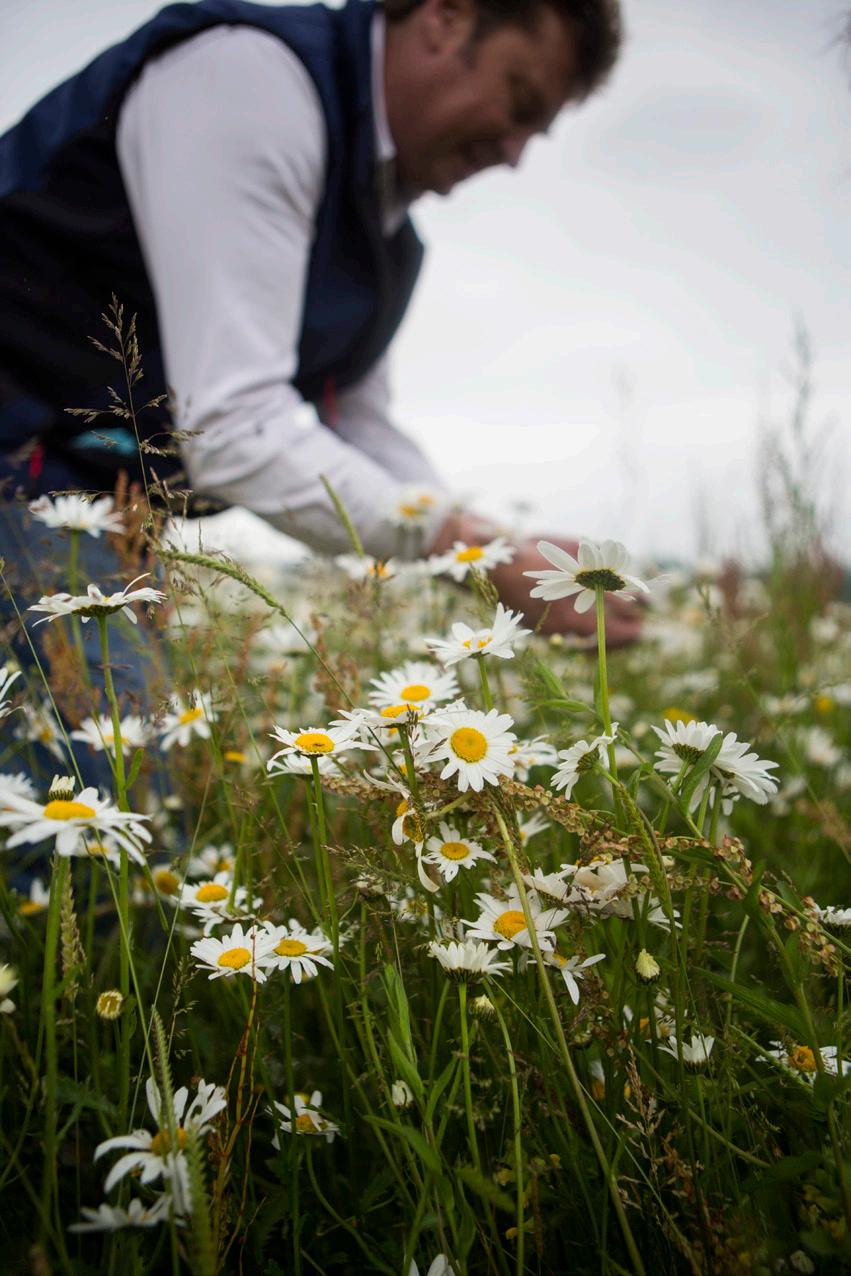
Providing native vegetation pockets on farm is a win-win for biodiversity and agriculture. These pockets provide vital food and shelter for native species, while also acting as corridors to navigate the landscape. Additionally, native plants attract pollinators, promote natural pest control, and improve soil health.
The presence of livestock, particularly in a mixed farming system, can help support varied and beneficial biodiversity. Good grazing management should take into account all key habitats and protected species on farm with grazing plans drawn up to reduce the risk of compaction and overgrazing, covering permanence of animals, stocking rates, and time for rest and regrowth of forage.
Consider the following:
▷ Routes to and from grazing areas to promote efficient pasture management, prevent overgrazing, and minimise soil compaction and environmental impact to wildlife corridors / other habitats.
▷ Positioning of gateways, fencing, feeders, and drinkers to reduce compaction and vegetation damage.
▷ Sward species to maintain soil structure and health (integrating legumes is an easy way to do this). Deep rooting species improve sward resilience.
Case study. Springfield Farms.
Situated in Northern Limpopo, South Africa, Springfield Farms is a family run business, comprising 2000 hectares of avocados, macadamia nuts, pecans, timber, and woodland. The Whyte family are passionate about environmentally-friendly farming and have introduced a range of measures on farm to conserve and protect local wildlife and vegetation, with a particular focus on Integrated Pest Management (IPM).
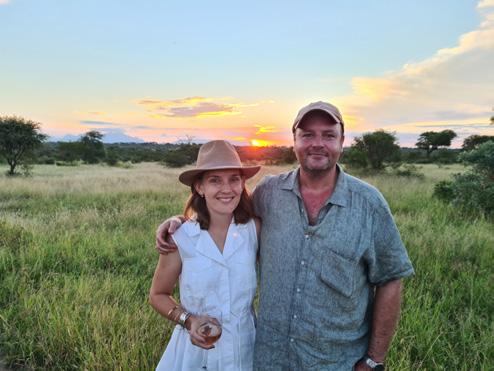
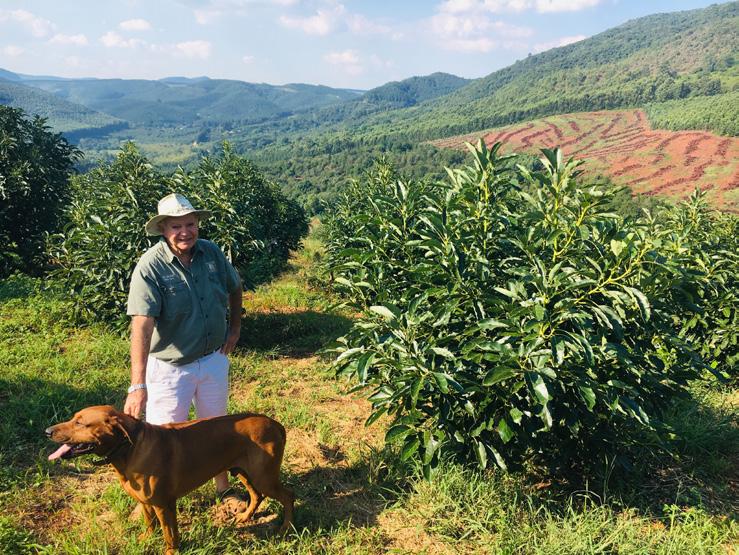
Valerie & Graeme Whyte, Farm owners
Alan Whyte, Farm owner
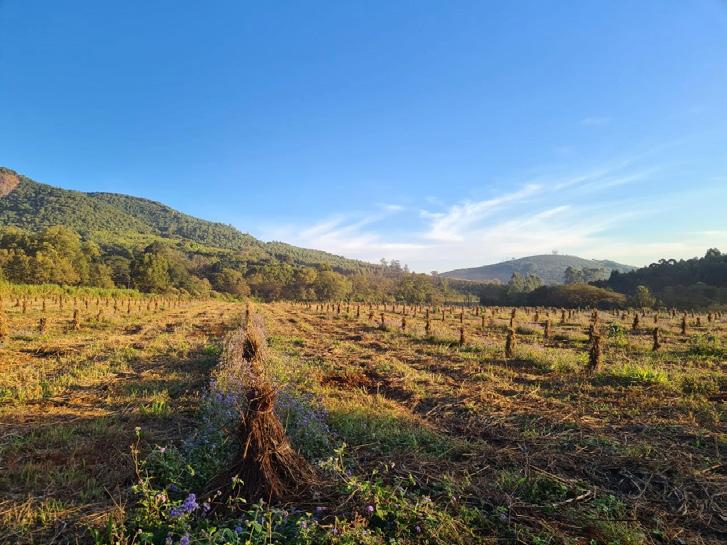
Springfield Farms has an important commitment to conserving indigenous vegetation. Unlike many neighbouring farms that have removed their native bushlands, Springfield Farms has opted not to de-bush any indigenous areas. This dedication to preserving natural habitats is crucial, especially given the farm’s location at the foothills of the Soutpansberg Mountain range, a recognised centre of endemism and biodiversity. Moreover, they are part of the Luonde Nature Reserve which they help to conserve.
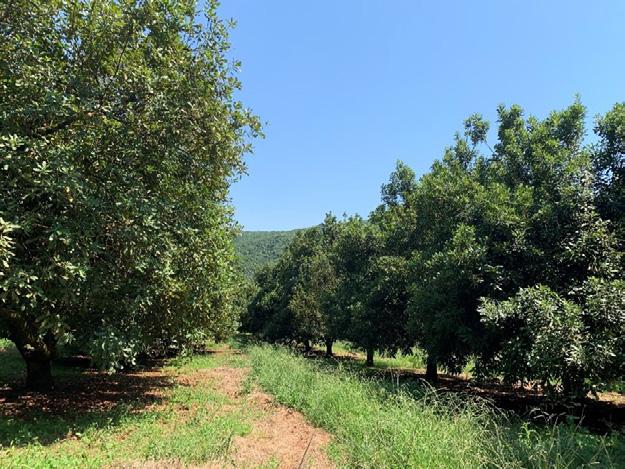
The farm employs Integrated Pest Management (IPM) strategies to minimise the use of chemical inputs and enhance natural pest control. Springfield Farms has strategically placed bat houses and beehives within pockets of indigenous bush inside their orchards. These measures support pollination and pest control by encouraging natural predators. The presence of 20 species of insectivorous bats helps control pest populations, while 140 beehives made from recycled tyres and wood contribute to effective pollination. Despite their efforts, they face challenges with pest control, particularly with stink bugs, for which there are currently no effective pheromone traps. They use pheromones for monitoring but continue to seek solutions for better management.
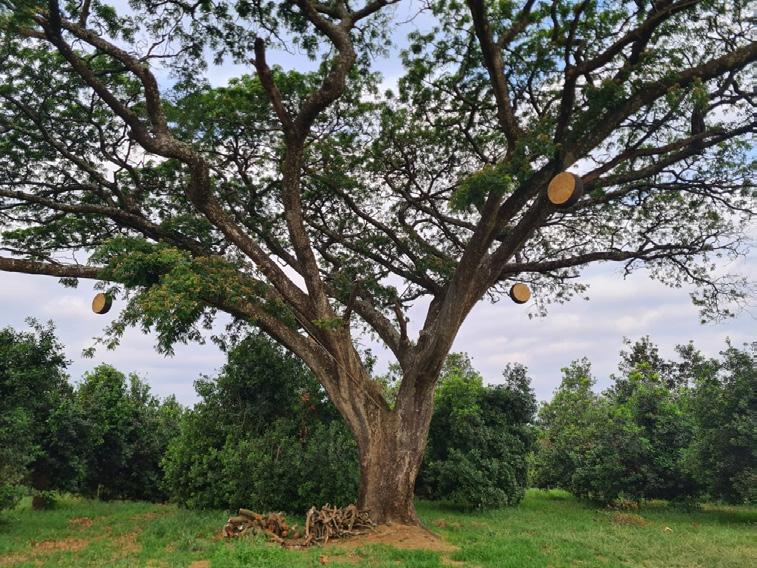

Case study: Springfield Farms.
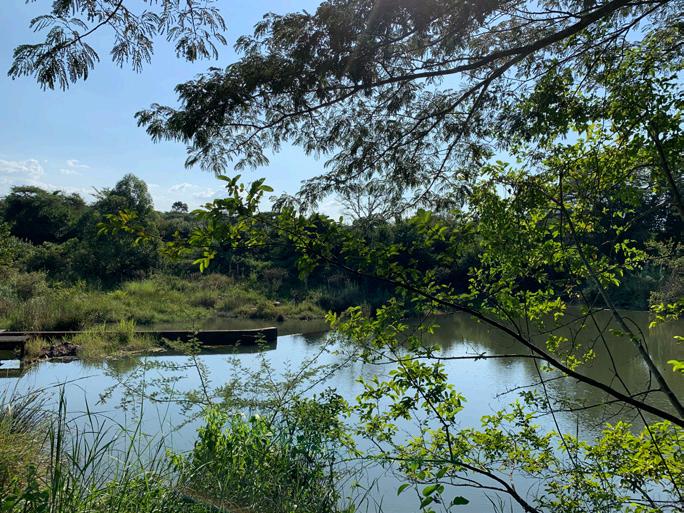
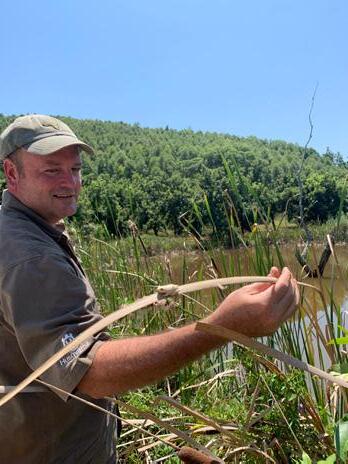
Their conservation efforts extend beyond pest management. The farm has also addressed specific local challenges, such as protecting beehives of stingless bees and implementing measures to prevent porcupines from damaging water pipes. To combat illegal activities, the farm employs security personnel to patrol and protect both their crops and indigenous bushlands. These guards remove snares, prevent illegal netting in water sources, and safeguard equipment and crops from theft. Additionally, they contend with local communities that rely on indigenous wood for firewood and medicinal purposes, working to balance conservation with local needs.
Springfield Farms’ dedication to biodiversity conservation and sustainable farming practices highlights the importance of managing farmland sympathetically. Their approach not only supports the local ecosystem but also demonstrates how integrating environmental stewardship into farming operations can lead to a more resilient and productive agricultural system.

Field margins and boundaries.
Try to make the most of field margins by ensuring that they are actively managed and incorporate pollen, nectar and wildflower mixes where possible. Mixes often require regular treatment especially in the early stages of establishment. Consider conservation headlands around cropped fields and/or field corners.
Farmland margins can be transformed from simple boundaries into havens for wildlife. Diversifying the vegetation along these margins fosters a more balanced ecosystem. Instead of single-species rows, you could introduce a variety of plant species with different heights and growth habits. This creates a layered structure, offering a range of microhabitats for diverse species. For example, a hedgerow with a mix of tall trees, flowering shrubs, and low-growing ground covers provides nesting sites for birds, hiding places for small mammals, and a buffet of nectar and pollen for pollinators.
While maintaining boundaries is important, minimise unnecessary interventions. Plan and schedule any hedge-cutting to avoid disrupting nesting seasons; hedges can be strategically cut every few years to maintain their shape while still offering ample habitat.
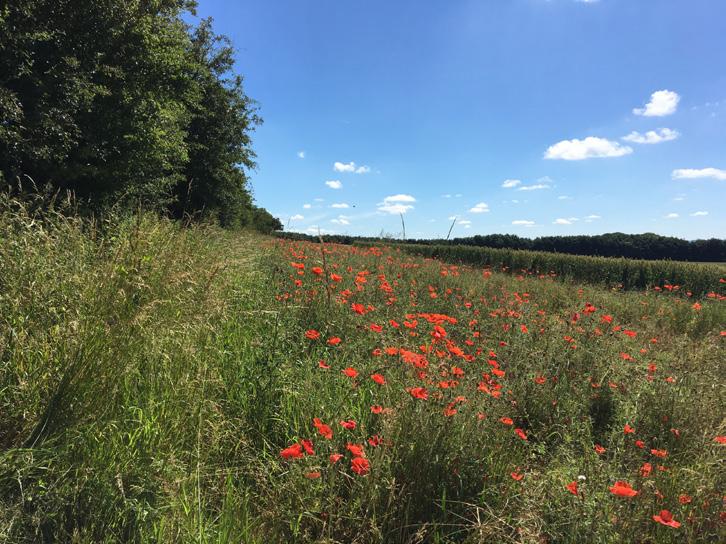
Watercourses.
Monitor and clear watercourses as appropriate and avoid clearing ditches during nesting periods. Ditch maintenance should be restricted to one side of individual ditches in any one year to allow nature some time to adjust. Aim for a range of watercourses and/or waterbodies of varying depths and flow speeds and aim to promote biodiversity in the immediate vicinity of watercourses and/or waterbodies.
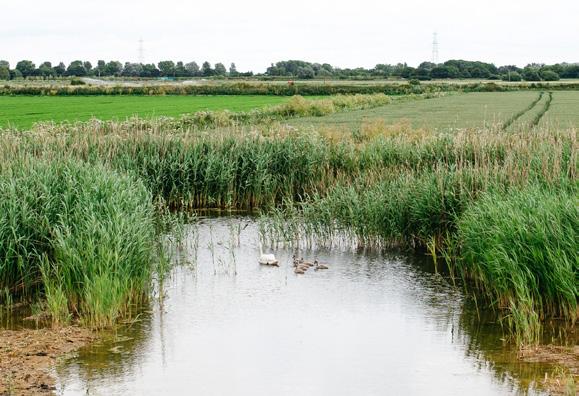
In mixed farming systems, avoid livestock entering waterbodies to prevent disturbance and contamination of surface water. This can be done by having livestock exclusion zones or controlled access points and providing alternative watering points strategically located away from waterbodies.
Habitats for birds.
Target the ‘big three’ for farmland birds:
▷ Nesting habitat.
▷ Summer food.
▷ Winter food.
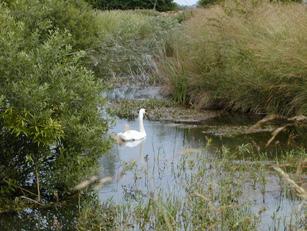
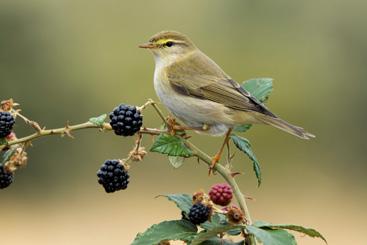
Protection from invasive species.
Monitor and manage invasive species carefully to ensure correct identification and management of non-native species. This can include preventing cross contamination of equipment being used across sites and control measures to prevent invasive species from spreading during packaging / shipping of products.
Other examples of farmland habitat.
▷ Trees - biodiversity can benefit from actively managed trees and areas of agroforestry.
▷ Farm buildings - can offer roosting and nesting sites for bats and birds.
▷ Beetle banks - provide refuge for insects and birds over winter. Also act as natural corridors between areas of habitat.
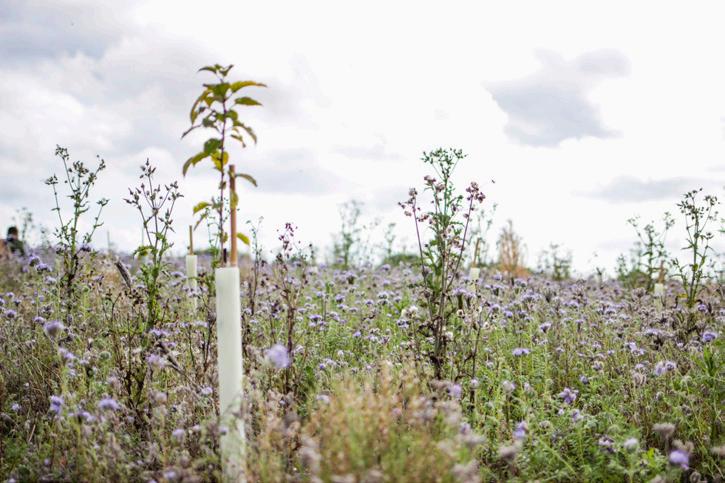
Case study. The Allerton Project.
The Allerton Project, part of the Game & Wildlife Conservation Trust (GWCT), is a mixed arable and livestock research and demonstration farm based on 320ha of silty clay loam on the Loddington Estate, in the English East Midlands.
It is a LEAF Innovation Centre, BASIS approved trainer, and welcomes some 2,000 visitors every year including farmers, agronomists, environmental groups, policymakers, food manufacturers and retailers, civil servants, and the general public at its annual Open Farm Sunday event.
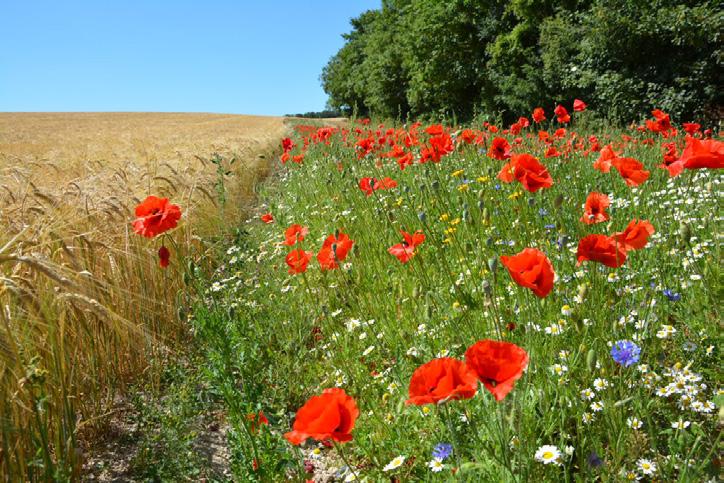
Head of Sustainable Farming, Joe Stanley, explains how the project works to integrate biodiversity and wildlife conservation with commercial farming:
“Since our inception in 1992, research into farmland biodiversity and habitat creation has been at the core of our work, aided by a full-time ecology team. Many of the options farmers will find in the modern agrienvironment handbook - from winter bird seed mixes to beetle banks to supplementary feeding – stem from our research.
From the earliest days of the project, we instituted and monitored what we refer to as the ‘three-legged stool’ approach to farm wildlife conservation:
▷ Habitat creation
▷ Supplementary feeding
▷ Predation control

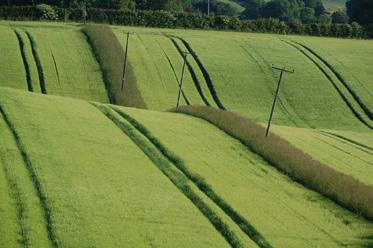
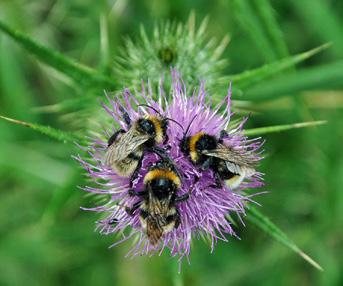
Case study: The Allerton Project.
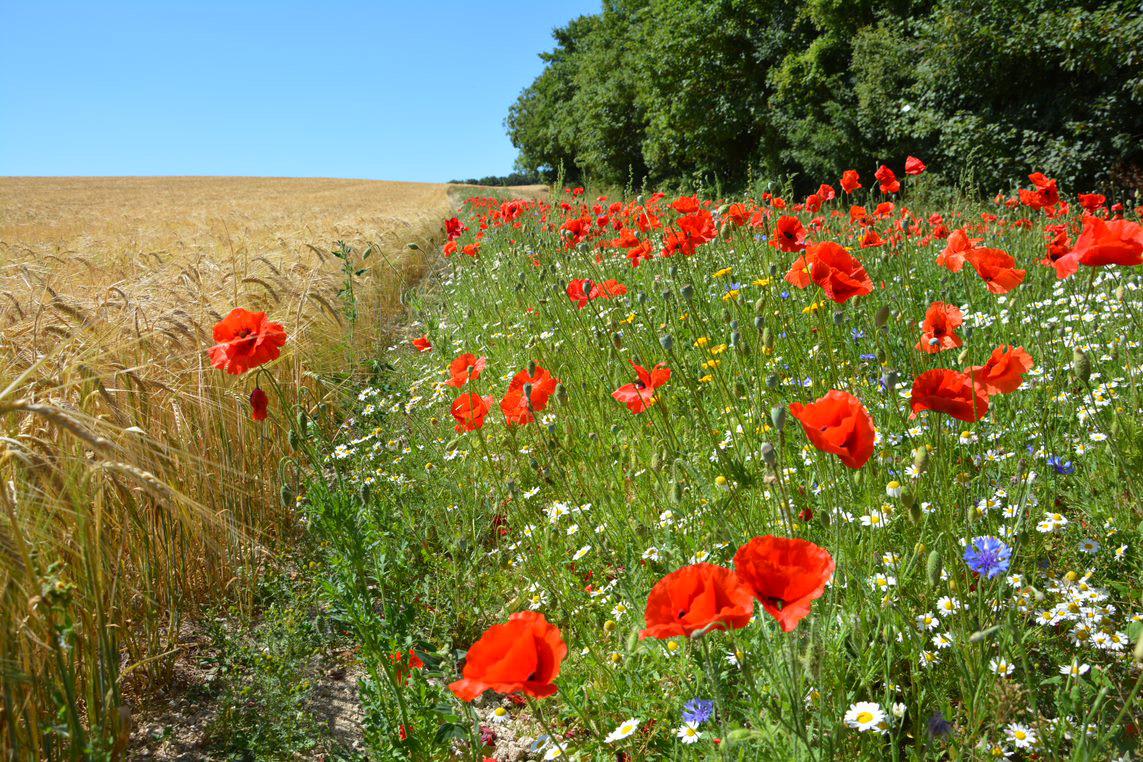
What we can demonstrate over more than thirty years of continuous monitoring of many of our key species is that – when implemented together – this approach returns huge dividends for the biodiversity of our farmed landscape. Today, overall songbird numbers are 97% above the 1992 baseline, while Biodiversity Action Plan (BAP) species are 81% higher, alongside a sustained 800% increase in brown hare numbers. We’ve also bucked the national trend for the decline in macromoths, which have seen numbers dip by some 30% since the 1990s at the same time that ours have increased by 30%. All this alongside ‘conventional’ arable and livestock production, but achieved by optimising some 15% of our farmed area for permanent habitat (such as grassy margins, new hedgerows and pollen and nectar mixes) while also introducing nature-friendly practices across the farm such as reduced tillage, a no-insecticide policy and wider, more varied rotations.”
The Allerton Project are also the home of the GWCT Big Farmland Bird Count, which in 2023 saw over 1700 farmers and land managers take part, recording 149 different species across 1.5m hectares of farmland. It’s a great way to become more aware of the nature on your own farm, taking a mere 30 minutes out of a working day to help demonstrate some of the great work which we’re doing as an industry to help secure the future of
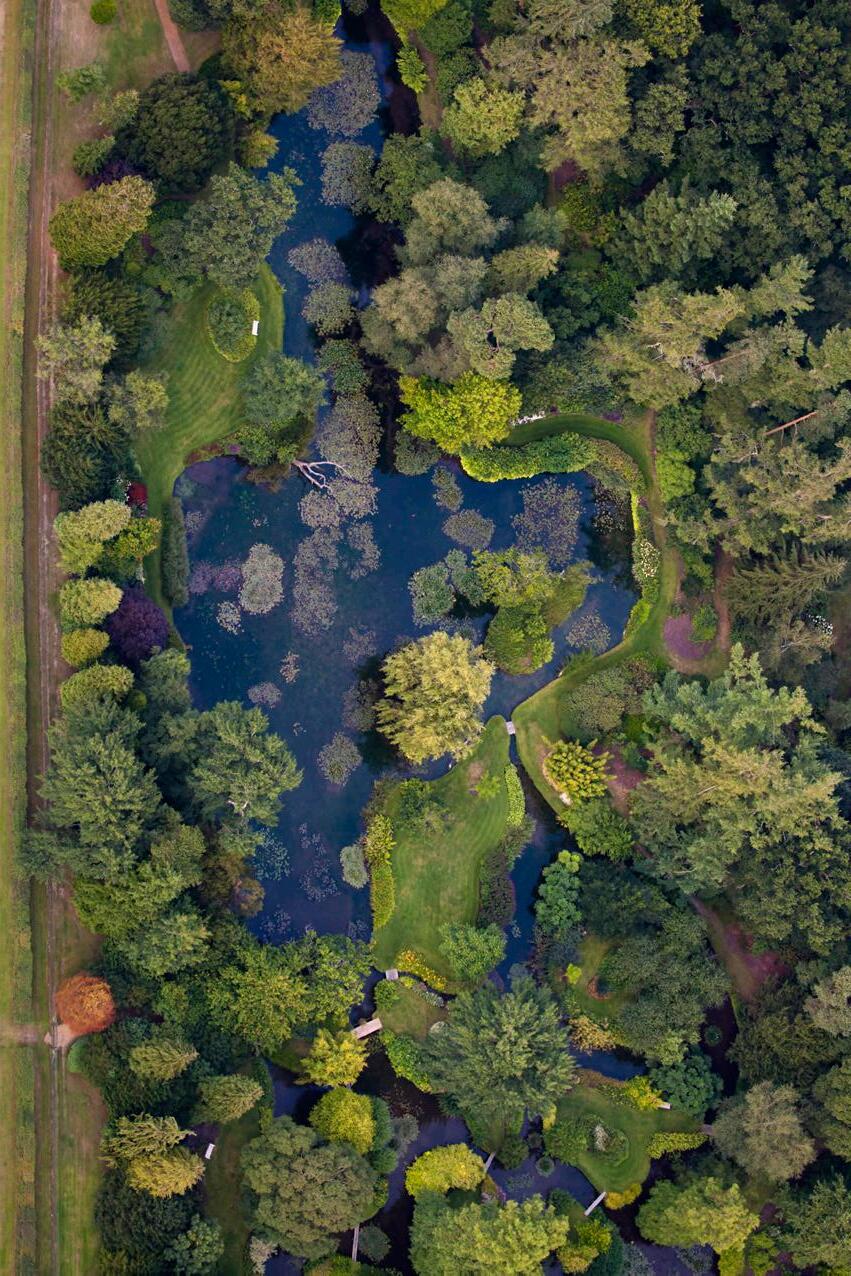
Enhancement. existing habitats and populations.
Use your Landscape and Nature Conservation Enhancement Plan to set targets and actions to enhance the quality and function of existing habitats
Consider innovative ways to further support biodiversity, these could include: bioacoustics monitoring, geospatial mapping for habitats and apps
Aim for more connected habitats across the farm to promote and protect biodiversity. Provide a mosaic of different habitats to encourage a range of species across the farm. This can be achieved even within specific areas, for example, think about the range of micro-habitats that can be created within a margin if species composition and management is sufficiently
Set targets and timescales to improve your habitat and environmental features in a similar way to business and market opportunity targets. Monitor and evaluate the impacts of your interventions on habitats and species and adapt your management plans accordingly.
Case study.
E.J. Barker & Sons.
E.J. Barker & Sons, a familyowned partnership managing the 545-hectare Lodge Farm, balances arable crop production with a strong focus on enhancing biodiversity.
Situated in East Anglia, the farm grows winter and spring cereals, oilseed rape, spring beans, and herbage grass seed. Through sustainable practices and the integration of wildlife-friendly habitats, Lodge Farm exemplifies how productive farming can coexist with efforts to boost biodiversity.
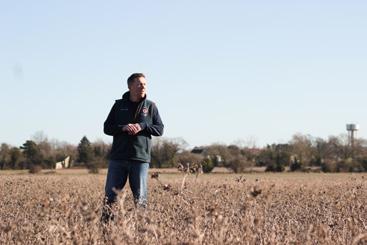
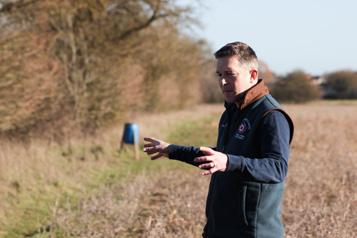
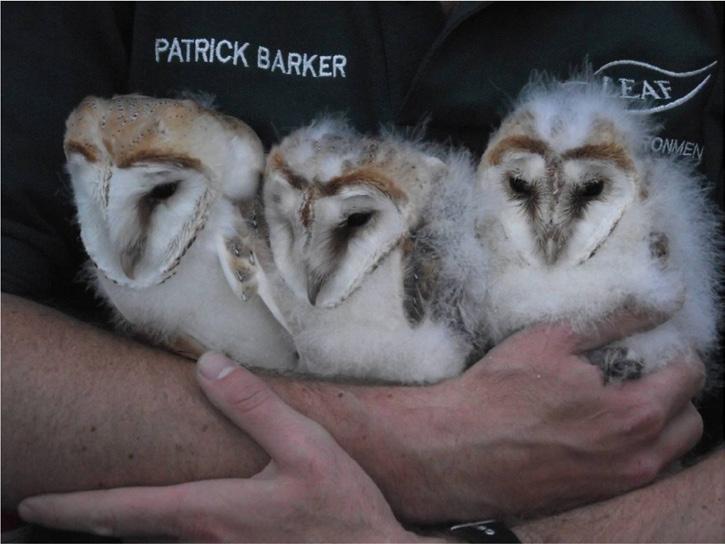
Patrick Barker, Farm owner
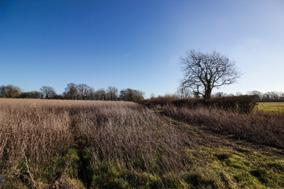
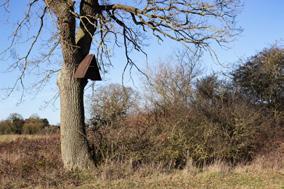
The farm uses detailed nutrient mapping, crop rotation, and Integrated Pest Management (IPM) to ensure resources are used efficiently while promoting soil health and reducing reliance on chemicals. By monitoring crop pests and encouraging predatory insects with flower strips, the Barkers are able to minimise pesticide use. These measures not only improve productivity but also create diverse environments where different species can thrive. Maintaining and creating habitats is integral to the farm’s strategy. Vegetation of varying heights, ages, and densities is fostered across the farm, supporting a wide range of wildlife species.
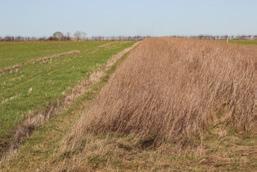

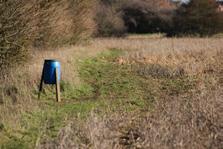
A major project undertaken by the farm has been the establishment of a ‘Green Grassland Corridor’ that runs through its centre. This corridor, along with newly planted and ancient hedgerows, provides safe pathways for wildlife to move through the landscape. The mix of native plants in the hedgerows offers shelter, food, and nesting opportunities for various species, particularly birds. To further bolster the local ecosystem, the farm has set aside significant areas for wildflower meadows and wild seed planting. These meadows are not only rich in biodiversity but are also strategically placed in areas unsuitable for arable production, maximising the utility of every part of the land.
Lodge Farm has taken special measures to support farmland bird species, particularly the grey partridge. This bird requires complex habitats, and efforts to sustain its population have resulted in the flourishing of other species as well. As grey partridge populations have grown, so too have the numbers of other birds like barn owls, kestrels, yellowhammers, linnets, and reed buntings. The restoration of ponds on the farm has further increased biodiversity, providing habitats for great crested newts and creating new nesting sites for birds. These ponds, along with rotational arable crops and grass margins, contribute to creating a diverse and connected landscape.
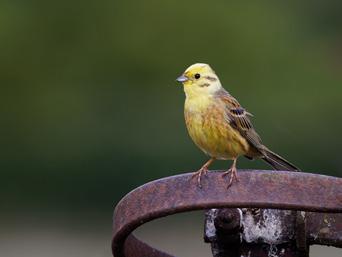

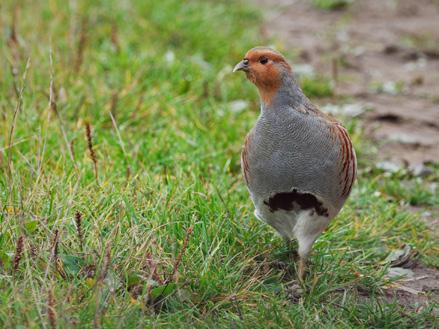
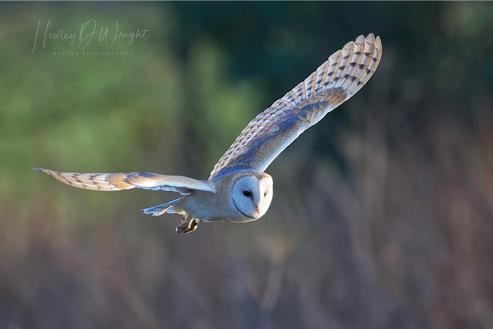
Case study: E.J. Barker & Sons.
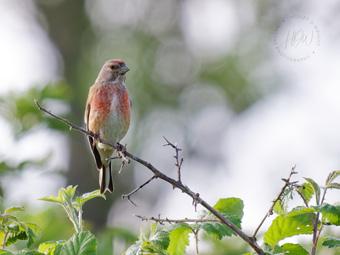
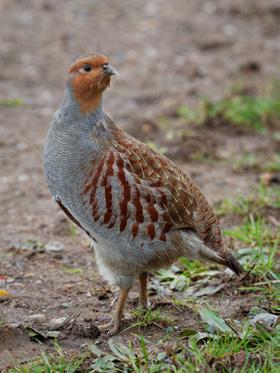
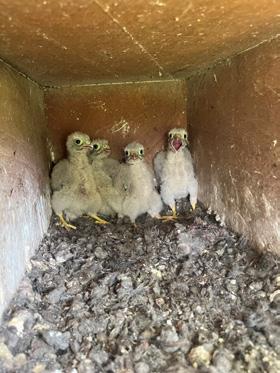
In addition to its ecological efforts, they also work with other local farmers as part of a farmer cluster group, the High Suffolk Farm Cluster, to create a broader landscapelevel impact on biodiversity. This collaborative approach allows the farms to connect habitats and strengthen wildlife corridors across multiple farms. Lodge Farm also promote community involvement, they regularly host educational visits for various groups. These activities not only raise awareness of sustainable farming but also showcase the importance of integrating biodiversity into agricultural systems.
Through a combination of habitat creation, wildlife monitoring, and sustainable farming practices, E.J. Barker & Sons have successfully enhanced both the landscape and the local wildlife populations. Their work with grey partridges and other farmland species serves as a model for how farming can support biodiversity, proving that a productive agricultural system can simultaneously be a thriving habitat for wildlife.
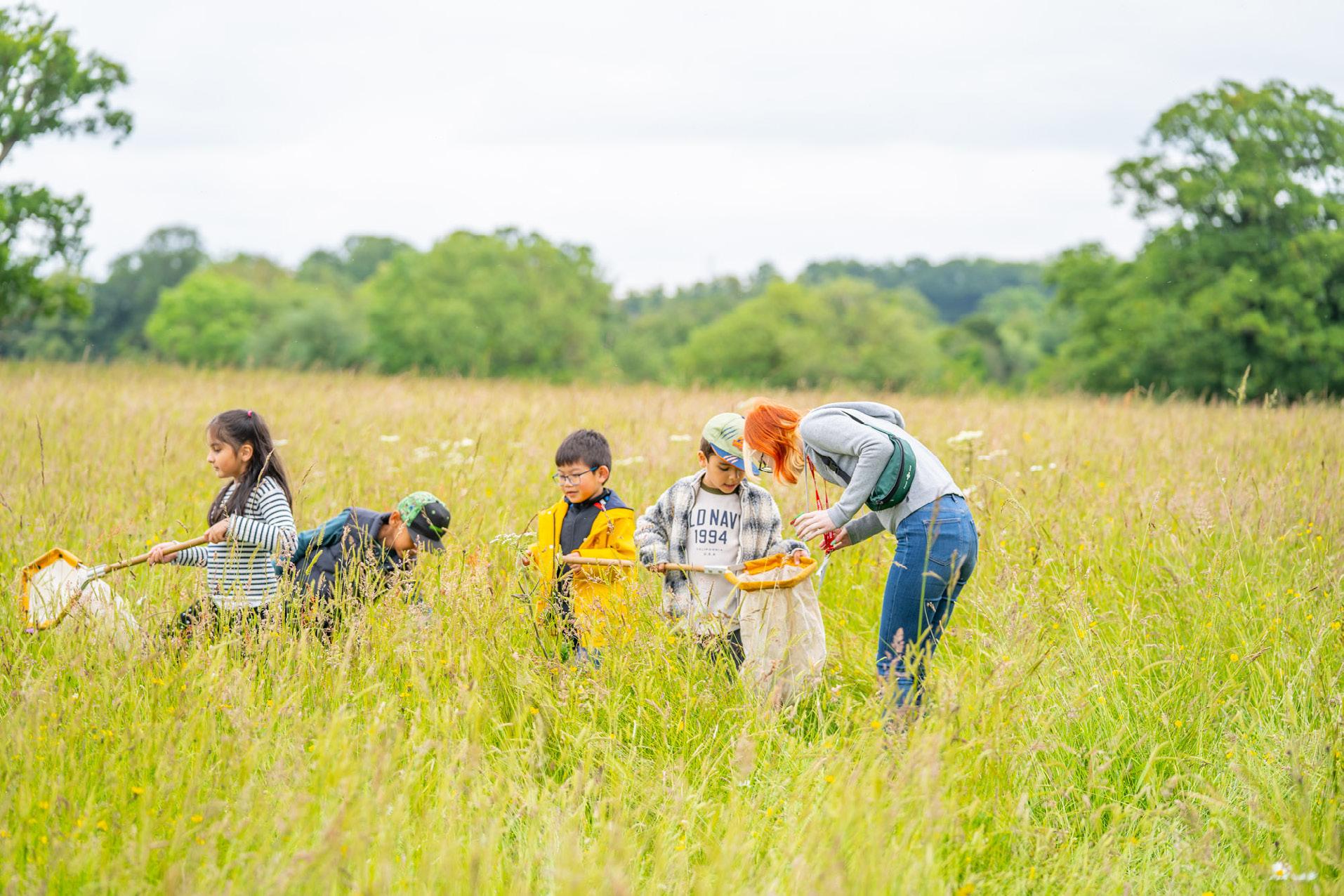

Case study. Yattendon Estate.
Yattendon Estate is a traditional farming estate in West Berkshire, with a large inhand farming operation which became part of the LEAF Demonstration Farm Network in 2022. The Estate farm covers an area of 2,422 hectares on the eastern edge of the North Wessex Downs. Farming and conservation go hand-in-hand at Yattendon. The Estate has practised “responsible, sustainable English farming” since 1925 and this commitment encourages us to take a long-term view, ensuring both production and conservation can support each other.

Nick Downs, Head of Sustainabilty
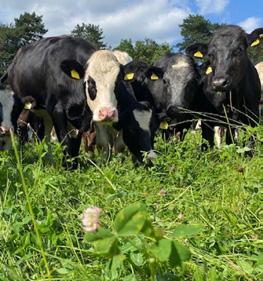
The rolling landscape with a wide range of soil types supports a varied crop rotation. Winter wheat is grown for milling, winter barley is supplied for animal feed while spring barley is grown for malting. Break crops between cereals include oilseed rape, peas, beans, and spring oats as a low input cereal that tolerate some of lower quality soils on the estate. Herbal leys and legume fallow crops areas are also rotated around the estate to help improve soil structure and health.
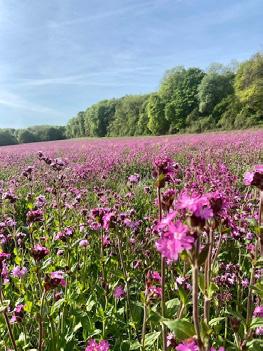
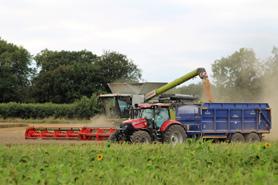
Livestock is being brought back into the farming system through the introduction of diverse herbal leys on less productive land which are grazed by cattle. Sheep graze over-winter cover crops to manage biomass and recycle valuable nutrients ahead of planting spring crops.
Integrating areas for nature across the Estate is fundamental to developing a resilient farming system. Nick Downs, Head of Sustainability on the Estate explains “Of the farmland, 15% is dedicated to protecting native species and features, supporting farmland birds, and creating habitats for pollinators and beneficial insects. We work closely with local organisations and volunteer groups who help us to monitor and record our progress. Bringing in additional expertise to identify not only what is successful, but where we can tailor our management to do better, is key to ensuring we continue to produce rich and diverse habitats for wildlife.”
The Estate works in partnership with eight local farmers as part of the Upper Pang river catchment, sharing knowledge to collectively manage and improve water quality and connect habitats across the local area. Additionally, 84 kilometres of footpaths cross the Estate and LEAF farm information boards in key areas help to communicate our journey. The farm also welcomes visitors from local schools and community groups, as well as policy makers, throughout the year with bi-annual Open Farm Sunday events providing an opportunity for the general public to come and see the farm in practice.
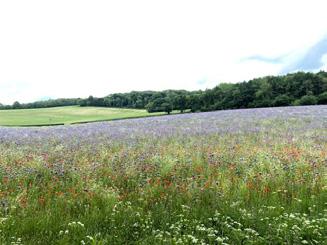
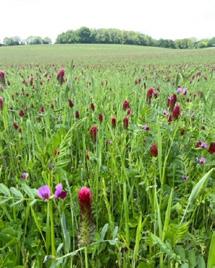
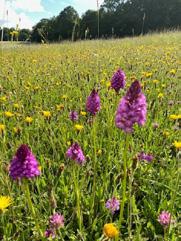
Further information.
LEAF, http://www.leaf.eco
LEAF Sustainable Farming Review, LEAF, leaf.eco/farming/review
Integrated Farm Management, LEAF, leaf.eco/farming/ifm
Crunching worms, squeaking voles, drumming ants: how scientists are learning to eavesdrop on the sounds of soil, Guardian, www. theguardian.com/environment/2024/apr/19/scientists-wildlifesounds-underground-species-soil-aoe
Home page, Farm Wildlife, farmwildlife.info
British Trees, The Woodland Trust, woodlandtrust.org.uk
Farmland habitats and their management, Warwickshire Wildlife Trust, www.warwickshirewildlifetrust.org.uk/farming-advice/farminghabitats-and-their-management
Merlin bird ID app, CornellLab, merlin.allaboutbirds.org
Recording app, iRecord; www.irecord.org.uk
Preserving our peatland, National Trust, www.nationaltrust.org.uk/ourcause/nature-climate/climate-change-sustainability/preserving-ourpeatland
How do you restore degraded peatland, Yorkshire Wildlife Trust, www. ywt.org.uk/how-do-you-restore-degraded-peatland
Resources, Agricology, agricology.co.uk/resources/
Silvopasture: The benefits of integrating livestock and trees, Sustainable Food Trust, sustainablefoodtrust.org/news-views/ silvopasture-the-benefits-of-integrating-livestock-and-trees/
GWCT wildlife advice, GWCT: www.gwct.org.uk/wildlife/advice
Big Farmland Bird Count, GWCT, bfbc.org.uk
Actions to conserve biodiversity, Conservation evidence, conservationevidence.com/data/index/?synopsis_id[]=9

(Linking Environment And Farming)
Stoneleigh Park, Warwickshire,
CV8 2LG
T: +44 (0)24 7641 3911
E: enquiries@leaf.eco
W: www.leaf.eco
This guidebook is kindly supported by Waitrose & Partners, as part of the Farming For Nature programme.

©LEAF 2024
Registered charity no: 1045781
LEAF is a company limited by guarantee, registered in England number: 3035047
